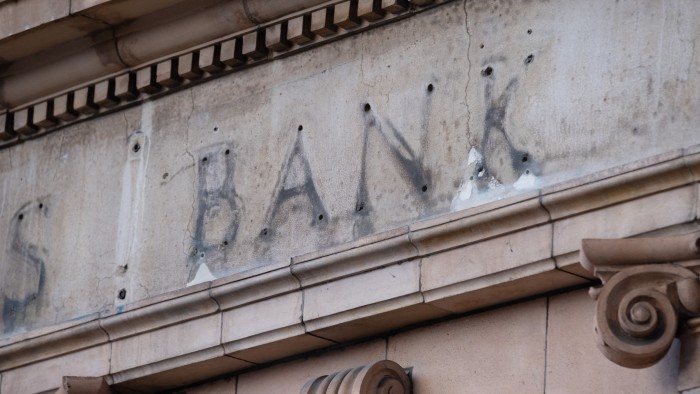Unlock the Editor’s Digest for free
Roula Khalaf, Editor of the FT, selects her favourite stories in this weekly newsletter.
Banks have shut more than one in three of their UK branches over the past five years and plan to axe more than a hundred more this year as they pull back from the high street and try to bolster their digital offerings.
Data from the Office for National Statistics shows the number of bank, building society and credit union branches in the UK fell to 6,870 in 2024, a 34 per cent fall on the 10,410 in 2019. Last year alone saw a 10.4 per cent decline.
The closures have continued apace this year, with Lloyds, NatWest, Halifax and Bank of Scotland set to close 113 branches before the end of November. In March, Santander announced it would close 95 of its 444 branches in the UK.
The UK is among the European countries that has closed the most bank branches, according to new figures compiled by management consultancy Kearney. Only Spain and the Netherlands have closed more branches as a proportion than the UK, losing 37 per cent and 48 per cent of their networks respectively over five years. All of the eight major European economies studied had cut their branch networks.
The figures show there is one bank branch per 10,000 people in the UK compared with 2.5 in Spain and Portugal and 4.9 in France.
“Compared with the rest of Europe, the UK really stands out, largely due to the scale of this shift [away from branch banking],” said Sameer Pethe, a partner at Kearney. “We now have the second-lowest branch density in Europe . . . only the Netherlands is lower.”
He added that the UK had even lower density than the Nordic countries, which are often thought of as “cashless pioneers”.
“That suggests a very lean branch network isn’t always necessary for digital adoption, and UK banks may have simply taken a more aggressive approach.”
As more customers start to bank online, UK lenders have closed bricks and mortar branches to clamp down on costs. At the same time, banks have revamped their apps and provided more services online to adapt to changing tastes among customers.
“This isn’t simply about doors closing or cost-cutting . . . it’s a clear signal that high street banks are reshaping their operating models, doubling down on digital as online banking becomes second nature for most customers,” said Pethe. From 2020 to 2024, the number of customers using digital channels to access banking products rose from 33 per cent to 59 per cent.
Traditional high street banks — NatWest, Lloyds, HSBC and Barclays — have also been forced to accelerate their pace of digitisation as newcomers such as Revolut and Monzo lure away younger customers with user-friendly mobile phone applications.
“The way that we bank has been changing for some time, with a shift to digital services which is driven by customer demand,” said Peter Tyler, director of personal banking at trade body UK Finance. “The variety of ways that customers can access banking services has grown in recent years,” he said. “That has led to a reduction in footfall in branches.”
The closures have raised fears that people would no longer be able to withdraw and deposit cash, which would have a disproportionate impact on older and vulnerable account holders.
Ministers in the last government brought in so-called Access to Cash legislation to mitigate this and prevent the emergence of “banking deserts”.
Last year, the Financial Conduct Authority, the UK regulator, said banks and building societies must assess local cash access and provide alternative cash services where gaps in the network are identified.
To respond, the sector has created “banking hubs”, which allow consumers of major banks and building societies to carry out cash transactions.
Last year, banks agreed to set up 350 hubs on UK high streets by 2029, to be operated by the Post Office. These hubs, which already number 179, also offer community banking services, where customers can seek advice on more complex banking issues from their lender.
 https://www.profitablecpmrate.com/nsirjwzb79?key=c706907e420c1171a8852e02ab2e6ea4
Skip to content
https://www.profitablecpmrate.com/nsirjwzb79?key=c706907e420c1171a8852e02ab2e6ea4
Skip to content 